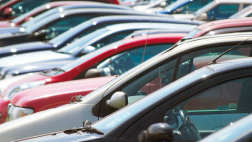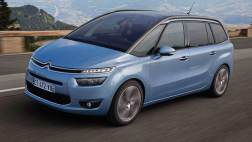GM and Toyota have used the forum of the Frankfurt Motor Show to spruik their green credentials. Toyota executive Mike Hawes told reporters his company was investigating biofuels.
Toyota has 10 years of experience with its Prius hybrid, which combines an electric and a petrol engine. But this endlessly vaunted car comprises only a tiny fraction of Toyota's sales.
General Motors, meanwhile, has developed vehicles that use petrol mixed with ethanol, so-called E-85-capable cars and trucks.
Both companies are working hard on technologies and presented their options at the Frankfurt fest.
GM Europe president Carl-Peter Foster said makers would probably focus on a range of solutions, as no single technology covered all needs.
GM highlighted several electric models at the fair, one of the sector's biggest showcases. Analysts forecast that most carmakers will have a hybrid option in their line-up within the next five years.
Ethanol is used in what are also known as flexible-fuel vehicles. These use engines similar to petrol ones, but running on a blend of up to 85 per cent ethanol, hence the E85 tag.
The big question, however, is cost. According to some estimates, 'clean' technology can add around $A4000 to the price tag of an SUV.
Fuel cells are even more expensive, but are the most promising long-term solution. Toyota announced it would market a fuel-cell car, costing about $A60,000, by 2015.
Another implication of the green evolution is having to learn a whole new range of auto jargon.
The latest automotive Jargon
Bluemotion
Volkswagen's name for the fuel-saving versions of its Polo, Passat and Golf models. The savings are made thanks to narrower tyres and lighter bodywork.
Bluetec
This is the technology Mercedes-Benz uses to make diesel cars just as clean as petrol engines.
The system reduces diesel particles by as much as 80 per cent, An oxidising catalytic converter and a particulate filter combine with other systems to reduce nitrogen oxide.
Brake energy recuperation
A BMW system in which the energy lost through heat while braking is used to recharge the battery.
Fuel cell
Hydrogen fuel cell vehicles are seen as one way to dramatically cut greenhouse gas emissions.
Hydrogen that is used in the cells is extracted from petrol or natural gas, and a chemical reaction with oxygen produces energy.
The only by-product is water. The main drawbacks are the energy needed to produce hydrogen and the infrastructure required to make it available.
Diesel hybrid
The most common hybrid engine is acombination of electric and petrol, but some producers favour an electric-diesel hybrid because diesel engines use less fuel.
Diesotto
A petrol engine offering the high torque and fuel economy of a diesel, paired with extremely clean emissions. Mercedes calls it "the future of the petrol engine."
Ecoflex
Opel's name for a range of low-consumption, low-polluting models with small electric and diesel engines that were launched at theFrankfurt show.
Econetic
Ford's name for a new range of cars with lowered suspension, aerodynamic profiles and narrow tyres that help reduce both emissions and fuel consumption. The first model is expected in 2008.
Efficient dynamics
BMW's environmentally friendly cars using Stop-Start Technology.
Electric engines
Electric cars produce no emissions, and significant progress has been made in prolonging battery life.
Hybrids
Cars such as Toyota's Prius and Honda's Civic that use a combination of petrol and electric engines. In town, hybrid cars mainly use the electric function. For longer- distance driving, the petrol function can be switched on.
Stop-start technology
The engine cuts out when the vehicle comes to a halt and automatically starts again when it needs to drive off.


.jpg)







.jpg)



.jpg)
.jpg)
.jpg)
.jpg)







.jpg)

Comments